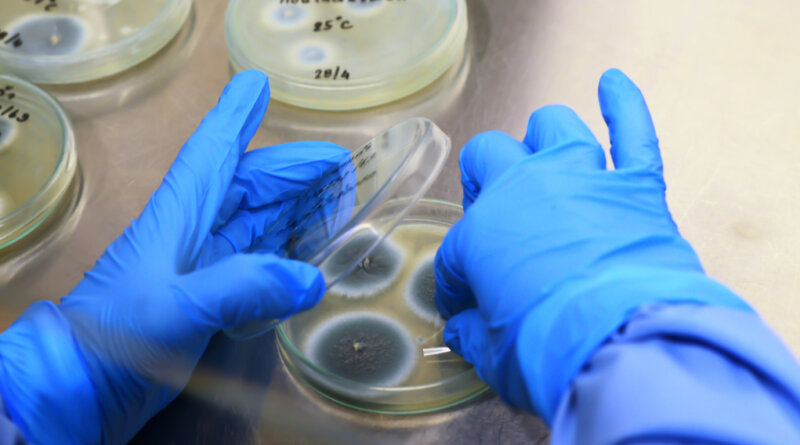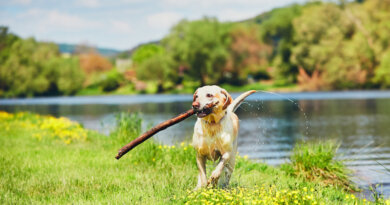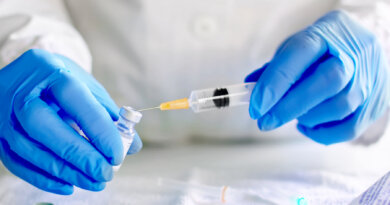Mycotoxins In Dog Food – How Dangerous Can It Be? – Top Dog Tips
Mycotoxins are naturally occurring toxins. While these toxins are not new to the pet industry, they can be a great source of danger to our pets.
Mycotoxins can affect animals depending on their breed or species and rely on the pet’s age and overall health.
As pet owners, this article will help you learn what mycotoxins are and what you can do to reduce the risk of consuming them.
What Are Mycotoxins?
Mycotoxins are poisonous chemicals produced by molds and fungi. These toxins can grow on crops and other food in warm and humid conditions, e.g., cereals, nuts, spices, dried fruits, apples, and coffee beans.
Mycotoxin contamination can happen during food production because molds grow on living crop plants, fruits, grains, and stored processed food products.
Eating mycotoxin-contaminated food can make dogs, even humans, to be sick. Ingesting large doses of mycotoxins, like aflatoxin, can be lethal to one’s body.
How Do Mycotoxins Get into Dog Food?
Animal feeds contain toxic herbal ingredients. That’s why meat-eaters such as cats, dogs, rabbits, and birds, may face adverse health effects when consuming them.
Also, when fed with dry dog food, dogs have a higher risk of poisoning due to higher grain content than wet dog food.
Aflatoxin exhibits more health risks to pets. However, some mycotoxins, e.g., ochratoxin, zearalenone, DON, and fumonisins, may cause chronic diseases to pets.
What Is Aflatoxin?
Aflatoxin is from the greenish-yellow mold in four strains: B1, B2, G1, and G2. The most toxic one is aflatoxin B1, a carcinogen that severely impacts liver function and immune response.
Where Can You Usually Find It?
You can find aflatoxin in corn, cottonseeds, peanuts, almonds, and other by-products. Corn is one of the main ingredients in dog food that contributes the most significant risk to dogs.
Aflatoxin infests the corn plant through its silks during pollination. This infestation can be field-wide but is more often in areas with more significant plant stress.
How Does It Affect Dogs?
Aflatoxin is fat-soluble, and it immediately goes to the liver once absorbed in the intestinal barrier.
Although the liver is the leading site of aflatoxin damage, the immune system status of the animal and its metabolic effectiveness can aid in reducing the exposure of the liver to aflatoxin.
Mycotoxin (Aflatoxin) Intoxication in Dogs
Causes
Here are some of the causes of mycotoxin poisoning in dogs:
- Spoiled left-over
- Feeding spoiled food
- Compost heap
Symptoms
Symptoms of intoxication may include:
- Vomiting
- Diarrhea
- High Fever
- Seizures and Tremors
- Abdominal Pain
- Restlessness
- Disorientation
Treatments
The first treatment for intoxication will focus on removing the toxic substance in the body.
The doctor may use activated charcoal to reduce the absorption in the stomach and other medications to initiate bowel movements.
Severe cases will require medication to control the symptoms and blood transfusion.
In aflatoxin poisoning, fluids and electrolytes are necessary to support liver function.
Other Toxins in Dog Food to Watch Out For
Production of toxins from molds and fungi never exist in one kind.
The potent toxins that undergo testing in many levels of the food supply chain include:
- Ochratoxin
- Fumonisin
- T2
- Zearalenone
- DON
These mycotoxins can severely affect dogs when ingested. Sometimes, chronic health illnesses can occur for humans and animals when built up in the body.
How to Protect Your Dog and Yourself from Mycotoxins?
As any pet lovers will testify, dogs tend to eat, sniff, or lick at almost any food resemblance – whether moldy or not.
Here are some of the things you need to do to protect yourself and your dog from these toxins:
- Properly dry and store the food.
- Avoid keeping food in warm and humid areas to help molds grow.
- Check foods like whole grains, dried fruits, and nuts regularly. Discard any food that has signs of discoloration or molds.
- Buy fresh grains and nuts. Store them properly in a dry and cool place, away from insects.
- Do not store the food for too long.
- Check out FDA’s notice for dog food recalls and advisories.
Also, it’s important to note that the production of mycotoxins from molds can penetrate deep into the food and not only around the surface.
By doing these preventive measures, we can help ourselves and our pets safe at most times.
Recommendations on How to Minimize the Risk in Consuming Mycotoxins in Dog Food
Here are some suggestions that can help pet owners in minimizing the risk of intoxication:
- Choose low grain and low cereal inclusive formula.
- Add fresh meat and supplement the diet with organs and cooked whole food to reduce toxin build-up.
- Choose good beneficial fiber like pumpkins or even pumpkin puree and partner it with dry kibble to aid in blocking toxins from staying in the gastrointestinal tract.
- Better gut health and gut environment for your pal will help his immune system ward off toxins and other pathogens.
- Use clay products to at least help bind toxins and traps these toxins in the pores of the clay.
- Activated charcoal would bind many toxins that can accumulate in the gut.
Food that is not fit for humans will more likely be toxic for your pet.
A high-quality diet is vital for keeping your furry friend happy and healthy.
READ NEXT: 7 Pet Food Toxins Causing Most Dog Food Recalls
Related









